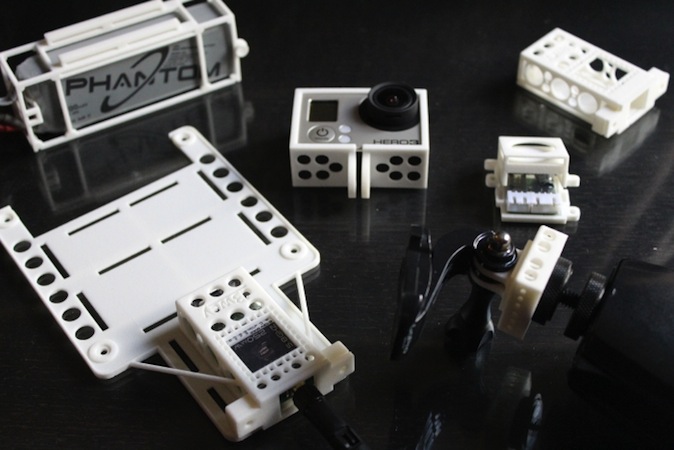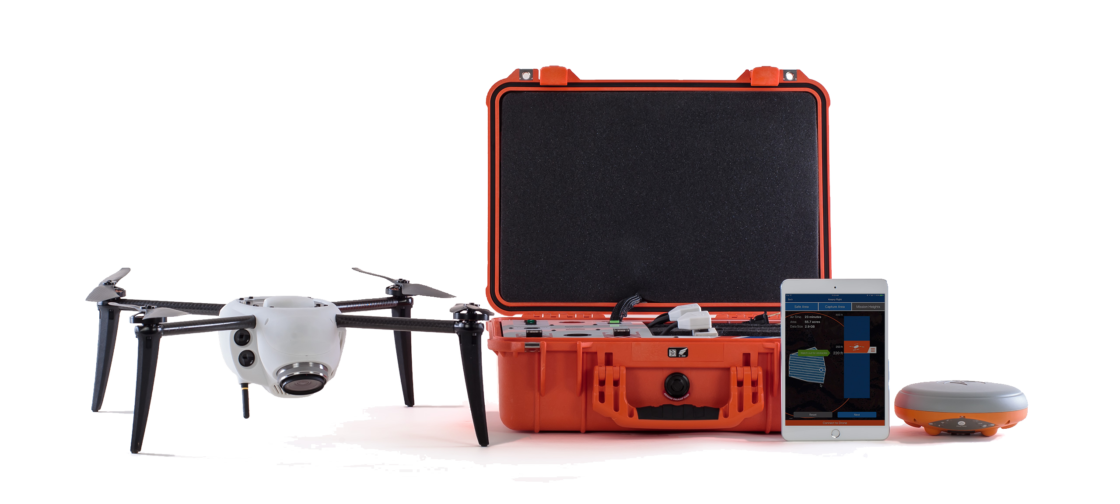
Drones bring great energy to the design and 3D printing realm, with engineers engaged in developing new technology around the world for gathering data and making workflow exponentially more efficient.
Also known as unmanned aerial vehicles (UAVs), these devices require highly customized design, detailed planning for transmitters and parts, and specifications for payload, camera options, and mounts. Photography plays a huge role in drone technology, and UAVS may be equipped with extremely high-resolution cameras. These electronics must be protected, however, offering another prime example where additive manufacturing is useful–in fabrication of 3D printed housings and other protective products.
Manufacturers and their Products Have Evolved with 3D Printed Drone Projects
In the past 15 years, Shapeways has seen the evolution of 3D printed drone projects from futuristic devices that were virtually unknown and unseen to bordering on the ubiquitous, hovering over potential real estate deals, areas prone to extreme weather which generate interest in the media, as well as large spans of land which may need continued surveying like agricultural areas.
Quantum-Systems, known for their Trinity F90+ UAVs and the Scorpion UAS, is one of Shapeways’ most dynamic customers. Founded in 2015, their journey in designing and manufacturing high-performance drones has included 3D printing with Shapeways since inception. Without question, the technology has allowed them to make a series of complex, task-oriented 3D printed drones that are durable and whittled down to the lightest weight possible for efficiency and speed while on important missions.
Kespry is another long-time Shapeways customer, and a drone manufacturer specializing in helping their own clients map out new territories above. The Kespry team originally came to Shapeways looking to improve speed in production, delivery to customers, and scale their business. Shapeways was able to work with them efficiently by 3D printing drones close to their final assembly locations, as well as meeting all international specifications.
3D printing with Shapeways also allowed Kespry to get products to their customers faster, without exorbitant premiums. The ability to prototype was highly valued as they could make changes so quickly–in comparison to injection molding which could involve months to make modifications during the iteration process.
Initially, Shapeways was able to 3D print a drone cover for Kespry to protect the mechanical inner workings. The Kespry team realized that making an injection molded part in that case would have been ‘exorbitantly expensive.’ 3D printing technology allowed them to make modifications as necessary, and take new, high-quality products to market faster.

Applications for 3D Printed Drones
Lightweight 3D printed drones can offer assistance in disaster areas. When firefighters encounter wildfires, drones are able to map strategic information and offer live streams. In search and rescue missions, drones can fill in as extra manpower initially, apprising teams of aerial details, and helping them to build a strategy.
Other applications include:
- 3D printed drones military
- Security and monitoring for maintenance of buildings and towers at airports
- Management of crops, livestock, and wildlife
- Consumer delivery
- Aerial photography for real-estate, agriculture, and other commercial endeavors
- Inspections of machinery, like wind turbines
One of the greatest benefits in using 3D printed drones is that they are capable of doing work faster than humans.

Streamlined Development and Testing with 3D Printed Drones
Experienced drone manufacturers have found that they can use the same versatile 3D printing materials in end-use manufacturing. Whether they are testing or making functional parts, manufacturers must prepare for 3D printed drone projects in terms of what they will be used for, how the devices should be shaped and finished, and other requirements. This includes considering payload, optimization of speed and aerodynamics, and other structural details like blade structure.
Whether companies are engaged in product development or manufacturing end-use parts for drone applications, Shapeways offers a variety of advanced materials:
- Nylon 12 [Versatile Plastic] with Selective Laser Sintering for both prototyping and functional use. SLS 3D printing offers high accuracy, along with good mechanical properties for prototypes. Offered in an array of colors for dyeing, as well as finishes–from Natural to Smooth–Nylon 12 [Versatile Plastic] is extremely popular because it is strong, yet flexible too. High ductility translates to stronger, thicker parts 3D printed with greater rigidity, while thinner parts result in more elasticity.
- Multi Jet Fusion Plastic PA12 and Multi Jet Fusion technology are also used for 3D printed rapid prototyping and functional products due to high strength and accuracy. MJF 3D printing is extremely well-adapted for drone prototyping and 3D printed drone projects due to precision in parts, as well as the excellence offered in surface quality and texture.
- Resin-based materials like Accura 60, Accura Xtreme, and Accura Xtreme White 200 with Stereolithography (SLA) are chosen for accuracy and good mechanical qualities. These 3D printing materials for drones also offer smooth surface finishes–suitable for designers engaged in prototyping or 3D printing for end parts that require a more realistic look.
- Aluminum (alloy AlSi10Mg, 10% Silicon 0.5% Mg) is favored for high-performance parts required for aircraft like drones, due to incredible strength and durability. Even better, Aluminum is lightweight enough to allow for maximum flying speed in UAVs. This metal is 3D printed with Selective Laser Melting (SLM), a technology known for its ability to 3D print strong metal parts rapidly, and without tooling. While SLM 3D printing processes have some basic elements in common with Selective Laser Sintering (SLS), it is used for more specialized components. Shapeways recommends SLM 3D printing technology to customers seeking low-batch production of complex metal parts with detailed designs.
Industrial drone design is highly calculated and manufacturing must be specialized for quality devices sturdy enough to withstand the rigors of the outdoors, as well as the intensive work they may be tasked to complete.

About Shapeways
Enjoy the benefits of this advanced technology and a wide range of materials from Shapeways for 3D printing your creations with accuracy, complex detail, and no minimum or limits in terms of mass customization or single part orders. Shapeways has worked with over 1 million customers in 160 countries to 3D print over 21 million parts! Read about case studies, find out more about Shapeways additive manufacturing solutions, and get instant quotes here.

